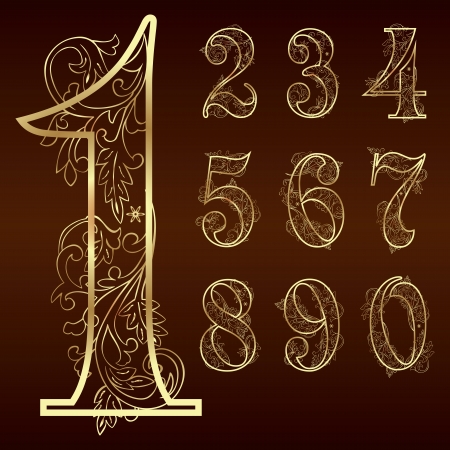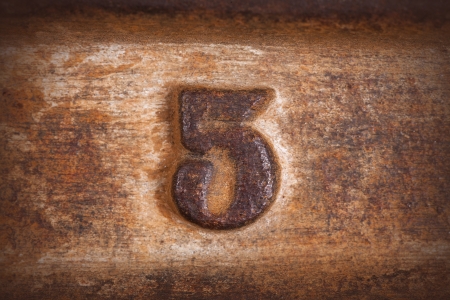Foundations of British Folk Magic
British folk magic, often referred to as “the old ways” or “cunning craft,” has deep roots that stretch back centuries, weaving itself into the very fabric of rural and urban life across England, Scotland, Wales, and Northern Ireland. Before the advent of modern science and organised religion, communities relied on a complex patchwork of charms, rituals, and spoken spells to shield themselves from both tangible and supernatural threats. These traditions were shaped by a blend of pre-Christian pagan practices, Christian symbolism, local legends, and the practical wisdom passed down through generations. The persistent fear of illness, misfortune, or witchcraft led people to seek protection not only for themselves but also for their homes and entire villages. In this context, folk magic became a communal resource—a toolkit for managing uncertainty in an unpredictable world.
2. Charms, Amulets and Written Spells
Within the tapestry of British folk magic, the use of physical charms, amulets, and written spells was central to protecting homes and villages from misfortune, illness, and witchcraft. Everyday objects—often humble in origin—became powerful guardians through tradition, intention, and ritual. These protective items did not merely reflect superstition but embodied a deeply-rooted cultural response to uncertainty and threat.
Common Protective Objects in British Folk Magic
The following table highlights some of the most widespread objects and their attributed powers within British communities:
| Object/Spell | Description | Cultural Role |
|---|---|---|
| Witch Bottles | Ceramic or glass bottles filled with sharp items (pins, nails) and personal effects (hair, urine) | Bottled up evil intent; buried under hearths or doorways to trap curses or malevolent spirits |
| Horseshoes | Iron horseshoes, often nailed above doors | Believed to ward off witches and bring luck; the iron was thought to repel supernatural forces |
| Written Charms & Spells | Parchments inscribed with protective prayers or magical formulas | Placed in homes or carried as amulets; invoked divine protection or counteracted specific threats |
| Rowan Crosses | Tiny crosses made from rowan wood tied with red thread | Used especially in Scotland for safeguarding against evil spirits and enchantment |
The Power of Words: Written Charms
Written spells were often a blend of Christian invocation and older pagan motifs. For example, a typical charm might read: “As Christ was born in Bethlehem, so may this home be blessed.” Sometimes these texts were concealed within walls or beneath floorboards, acting as silent sentinels. The act of writing itself—using particular inks or scripts—was considered part of the spell’s efficacy.
Everyday Ritual Meets Local Lore
What is striking about these artefacts is how they blend the ordinary with the mystical. A horseshoe above a cottage door in Yorkshire was not just decoration—it was a statement of intent, signalling both defiance against unseen dangers and continuity with ancestral practice. These rituals forged a shared language between neighbours: an understanding that protection lay as much in collective belief as in individual action.

3. Sacred Spaces and Protective Boundaries
Across Britain, the creation of sacred spaces and protective boundaries has long been central to folk magic’s role in everyday life. Whether in a bustling London terrace or a remote Cumbrian cottage, people have drawn upon tangible markers and ritual acts to define safe havens against unseen threats. The humble hag stone—often found on beaches or riverbanks, naturally pierced by the elements—has been hung near doorways and windows as a watchful talisman, its hole believed to repel witches and ill fortune alike. Similarly, rowan branches, revered for their red berries and ties to ancient druidic rites, have been woven into crosses or affixed above lintels to shield homes from evil spirits. Salt, a universal symbol of purity and protection, is still scattered across thresholds or window sills to create invisible barriers; even today, tossing a pinch over one’s shoulder after spilling is a reflexive gesture against bad luck.
These simple yet powerful artefacts serve not only as physical markers but also as reminders that the boundary between safety and peril is both material and mystical. In rural villages, entire communities once joined together for boundary-walking rituals—beating the bounds—to reaffirm both property lines and communal protection through prayer, song, and symbolic action. In urban settings, where tradition meets modernity, such practices persist in subtler forms: horseshoes nailed above doors in city flats or lavender sachets tucked behind radiators carry forward old beliefs in new contexts.
Ultimately, these British folk customs reflect a deep-seated understanding that home is not merely four walls but an ongoing act of safeguarding—a dialogue with landscape, ancestry, and unseen forces. By delineating sacred space through rituals both grand and humble, generations have inscribed protection into the very fabric of daily life.
4. Ritual Participation: Community Involvement
One of the most compelling aspects of British folk magic lies in its communal nature—rituals of protection were rarely solitary affairs. Instead, these customs wove together the social fabric of villages, fostering a sense of shared purpose and collective guardianship. From the rolling hills of Somerset to the rugged coastline of Northumberland, ritual participation acted as both spiritual defence and social glue.
Many protective rituals were tied to seasonal festivities, transforming annual events into opportunities for reinforcing community bonds. May Day, for example, saw entire villages come together to decorate homes with hawthorn branches—a gesture believed to ward off malevolent spirits and bring luck. Similarly, Plough Monday marked the first agricultural work of the year, when villagers would parade decorated ploughs around their fields, invoking blessings for fertile land and safe households.
Collective Charm-Making: A Shared Endeavour
While some charms were crafted by local cunning folk or wise women, many were assembled during communal gatherings. These sessions blended magical intent with neighbourly cooperation—whether weaving witch bottles from glass and pins, or crafting corn dollies after the harvest. This collaborative process not only heightened the efficacy of the charm (many hands lending strength), but also reinforced trust and interdependence among participants.
Examples of Communal Protective Rituals in British Villages
| Ritual | Occasion | Purpose | Community Involvement |
|---|---|---|---|
| Maypole Dancing | May Day | Encourage fertility & repel evil spirits | Villagers dance around maypole, decorating it together |
| Corn Dolly Making | Harvest Festival | Shelter the spirit of the grain & protect future crops | Women & children weave corn dollies collectively |
| Plough Blessing Processions | Plough Monday (January) | Bless fields & homes for prosperity and safety | Community parades plough through village, singing and blessing houses en route |
| Mumming Plays | Winter Solstice/Christmas | Dramatise death and rebirth; banish dark forces | Villagers perform together; audience participation encouraged |
| Cross-Quarter Fire Festivals (e.g., Beltane) | Beltane (May), Samhain (October) | Purge negative energies; ensure protection for coming season | Communal bonfires; villagers jump fires or carry embers home for luck |
The Enduring Power of Collective Rituals
The legacy of these practices endures in modern Britain—not only as folkloric curiosities but as reminders that mutual protection is at its strongest when rooted in shared experience. By participating in rituals side by side, villagers did more than keep their homes safe; they cultivated a resilient sense of belonging. In a world often defined by individualism, these traditions invite us to reimagine protection as something fundamentally communal—a ritual act that binds people to place, history, and each other.
5. The Shifting Face of British Protective Magic Today
As we step into the twenty-first century, the legacy of British protective magic is far from a relic of the past. Instead, it finds itself woven subtly—and sometimes overtly—through contemporary life. While most Britons no longer hang rowan crosses above their doors or inscribe protective hex signs on their lintels, the spirit of folk protection has adapted to suit modern sensibilities and anxieties.
Revived Rituals and Customary Practices
The resurgence of interest in folk customs—fuelled by local heritage groups and neo-pagan communities—has led to the revival of certain protective rituals. Wassailing ceremonies, once meant to bless orchards against evil, are now community events blending old chants with new intent, often with an environmental slant. Similarly, Morris dancing and seasonal festivals like Beltane are reinterpreted as acts of communal safeguarding, fostering a sense of togetherness that echoes the old village bonds.
Modern Talismans and Urban Protection
In urban Britain, protective magic takes on subtler forms. Homeowners may not consciously adopt witch bottles or horse brasses, but the popularity of lucky charms, evil eye amulets, and even “blessing” new homes before moving in hints at enduring beliefs. The act of hanging St. Christopher medals in cars or placing crystals on windowsills reflects a blend of superstition and self-care—a modern echo of ancient wards.
From Folklore to Pop Culture
British media has played a pivotal role in reviving magical motifs. Television series like “Detectorists” and books such as “The Essex Serpent” draw on folk traditions, introducing protective charms and rites to wider audiences. Social media platforms teem with hashtags like #WitchtokUK, where young people blend historical knowledge with contemporary spirituality—crafting sigils for mental health or adapting salt circles for digital spaces.
The Enduring Need for Protection
Ultimately, whether through traditional customs or creative reinvention, the British desire for protection remains constant—even if its face changes with time. In a world marked by uncertainty and rapid change, these rituals offer comfort, continuity, and a sense of agency. As old villages grow into bustling cities, the heart of folk magic endures: a quiet reassurance that we can still shield what matters most.


